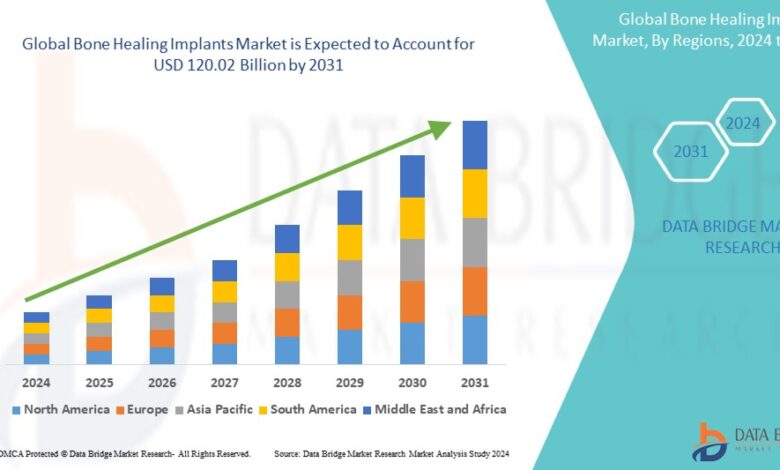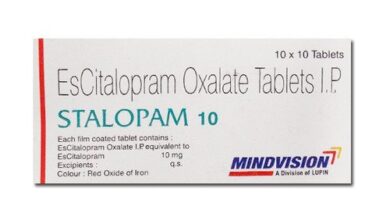Types of Bone Healing Implants: A Comprehensive Guide

Introduction
Bone healing implants are a critical part of modern orthopedic surgery, playing an essential role in stabilizing broken bones, ensuring proper alignment, and supporting the body’s natural healing processes. With advances in materials science, engineering, and medical technology, there are now various types of bone healing implants designed for different fractures, conditions, and patient needs. This comprehensive guide will explore the main types of bone healing implants, how they work, and their benefits and limitations.
Definition
Bone healing implants are medical devices designed to stabilize and support fractured or damaged bones, facilitating proper alignment and promoting the natural healing process. These implants, which include plates, screws, rods, and pins, are typically made from biocompatible materials such as titanium or stainless steel, and are used in orthopedic surgeries to treat a variety of bone injuries. Depending on the fracture type and location, bone healing implants provide internal or external support, ensuring that the bone fragments remain securely in place until the bone heals completely.
Understanding Bone Healing Implants
When a bone breaks, the body immediately begins a healing process. However, in many cases, particularly with complex or severe fractures, medical intervention is necessary to ensure the bone heals correctly. This is where bone healing implants come into play. These devices help hold the fractured bone in place, maintaining proper alignment during the healing process. Some of these implants remain in the body permanently, while others are removed once the bone has sufficiently healed.
1. Plates
Plates are one of the most common types of bone healing implants used in orthopedic surgery. These are flat or contoured metallic devices that are attached to the surface of the bone with screws. Plates provide rigid support, stabilizing the fracture so that the bone can heal properly.
Types of Plates:
- Dynamic Compression Plates (DCP): These plates are designed to compress the bone fragments together, promoting faster healing. The compression improves stability and facilitates bone growth.
- Locking Plates: Locking plates are unique because the screws used to attach the plate to the bone are “locked” into place, providing enhanced stability in cases of osteoporosis or where the bone is fragile.
- Reconstruction Plates: These plates are designed for use in complex fractures where the anatomy of the bone is irregular, such as pelvic fractures. They can be bent and shaped to match the bone structure.
- Tension Band Plates: These plates are used in areas like the elbow or knee where the bone experiences tension. The tension band converts the forces acting on the bone into compressive forces to aid healing.
Materials:
Plates are typically made from stainless steel or titanium. Titanium plates are more popular due to their biocompatibility, lighter weight, and corrosion resistance.
2. Screws
Screws are another commonly used type of bone healing implant. They are used either alone or in combination with plates to stabilize fractures. Screws work by holding bone fragments together, providing the mechanical support needed during the healing process.
Types of Screws:
- Cortical Screws: These screws are used for fractures in dense bone, such as in the diaphysis (shaft) of long bones like the femur or tibia. They feature a reduced thread height but a greater thread pitch to grab the dense bone.
- Cancellous Screws: The spongy bone in the metaphyseal regions (ends) of long bones is what these screws are utilized for. They have larger threads to better grip the softer, more porous bone.
- Locking Screws: Locking screws are used with locking plates and provide additional stability by locking into the plate. This reduces the need for the screws to rely solely on the bone for stability.
- Lag Screws: These are used when compression between bone fragments is desired. In order to securely draw the bone fragments together and speed up the healing process, lag screws are partially threaded.
Materials:
Screws are usually made from stainless steel, titanium, or bioabsorbable materials. Bioabsorbable screws are particularly beneficial in certain cases, as they dissolve over time and do not require a second surgery for removal.
3. Intramedullary Nails
Intramedullary (IM) nails, also known as rods, are long metal rods inserted into the medullary cavity (central canal) of long bones like the femur, tibia, or humerus. These implants provide internal support by aligning and stabilizing the fracture along the length of the bone.
Types of IM Nails:
- Standard IM Nails: These are used for straightforward fractures in long bones. They are inserted into the bone and locked into place with screws at either end.
- Recon IM Nails: These nails are used for more complex fractures, such as those involving multiple fragments or a combination of fractures in both the shaft and the end of the bone.
- Cannulated Nails: These nails are hollow, allowing for the insertion of a guide wire during surgery. This simplifies the insertion process and ensures proper alignment of the nail.
Materials:
Like plates and screws, IM nails are typically made from titanium or stainless steel. Titanium is preferred for its strength-to-weight ratio and biocompatibility.
4. Wires and Pins
Wires and pins are less rigid than plates, screws, or nails and are often used in conjunction with other implants to stabilize small or delicate fractures. They are commonly used in hand, wrist, and foot fractures, where the bones are smaller and more prone to multiple fragment fractures.
Types of Wires and Pins:
- Kirschner Wires (K-Wires): These thin, flexible wires are used to hold bone fragments together temporarily. K-wires are typically used in fractures of smaller bones, such as in the hand or foot.
- Steinmann Pins: These are thicker and more rigid than K-wires, making them suitable for larger bones like the humerus or tibia.
- Cerclage Wires: These are looped around the bone fragments to hold them together, often used in combination with plates or screws for added stability.
Materials:
Wires and pins are generally made from stainless steel due to its flexibility and corrosion resistance. In some cases, bioabsorbable materials are used for temporary fixation.
5. External Fixators
In order to stabilize fractures that occur outside of the body, external fixators are utilised. To link to a frame outside the skin, pins or screws are put into the bone to form its structure. Open fractures, complicated fractures, or fractures involving substantial soft tissue damage are frequently treated with external fixators.
Types of External Fixators:
- Monoplanar Fixators: These fixators stabilize the bone in a single plane and are typically used for simple fractures.
- Multiplanar Fixators: These provide stability in multiple planes, making them suitable for more complex or unstable fractures.
- Circular Fixators (Ilizarov Device): These are used in complex fractures, deformities, or lengthening procedures. The circular frame allows for controlled adjustment of the bone fragments over time.
Materials:
External fixators are generally made from stainless steel or carbon fiber for their strength and lightweight properties.
6. Bone Grafts and Substitutes
In cases where there is significant bone loss or the fracture is not healing properly, bone grafts or bone substitutes may be used alongside other implants. Bone grafts are taken from the patient (autograft) or a donor (allograft) and implanted into the fracture site to promote bone growth. Synthetic bone substitutes made from materials like hydroxyapatite or tricalcium phosphate are also used to fill gaps in the bone.
Choosing the Right Bone Healing Implant
The choice of bone healing implant depends on various factors:
- Type and Location of Fracture: Long bones like the femur may require IM nails, while fractures in the wrist may benefit from pins or screws.
- Patient Age and Health: Older adults with osteoporotic bones may need locking plates, while children may benefit from bioabsorbable implants.
- Complexity of the Fracture: Comminuted fractures (where the bone is broken into multiple pieces) may require a combination of plates, screws, and external fixators.
- Surgeon Preference and Experience: Surgeons often choose implants based on their familiarity and experience with specific systems.
Growth Rate of Bone Healing Implants Market
The size of the global market for bone healing implants was estimated at USD 82.61 billion in 2023 and is expected to grow at a compound annual growth rate (CAGR) of 4.78% from 2024 to 2031, reaching USD 120.02 billion.
Read More: https://www.databridgemarketresearch.com/reports/global-bone-healing-implants-market
Conclusion
Bone healing implants are a vital component of orthopedic surgery, ensuring fractures heal correctly and restoring function to the injured area. Whether it’s plates, screws, nails, or wires, each type of implant serves a unique purpose in bone stabilization and healing. The choice of implant depends on the specific needs of the patient, the type of fracture, and the surgeon’s expertise. The future of bone-healing implants is bright, with continued breakthroughs in materials science and technology promising better results and quicker patient recoveries.




